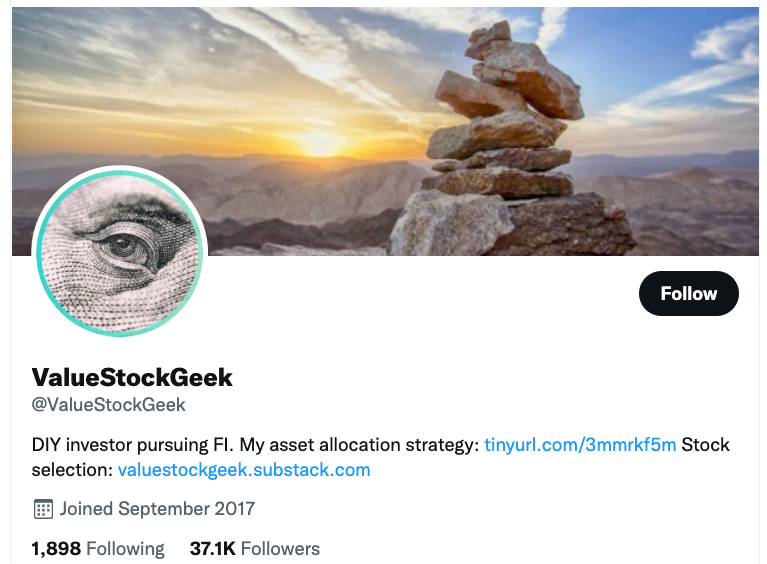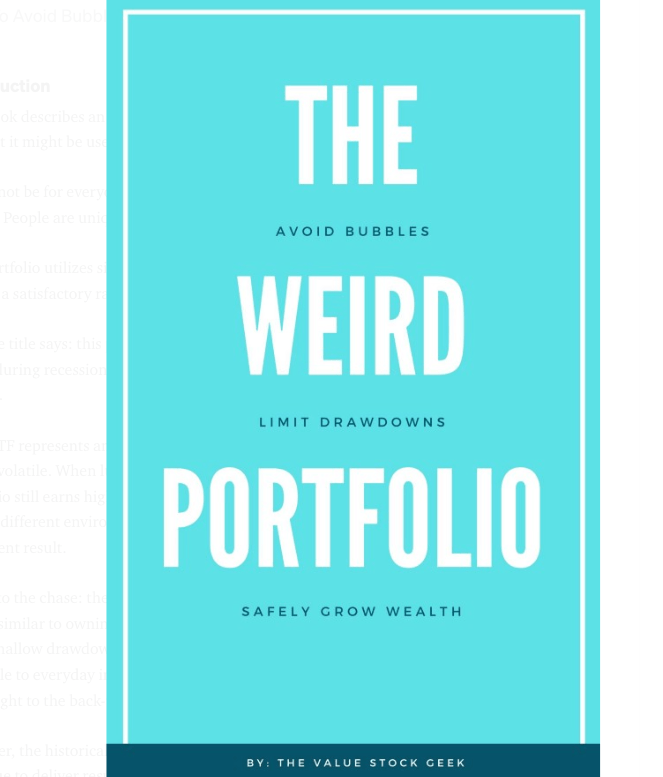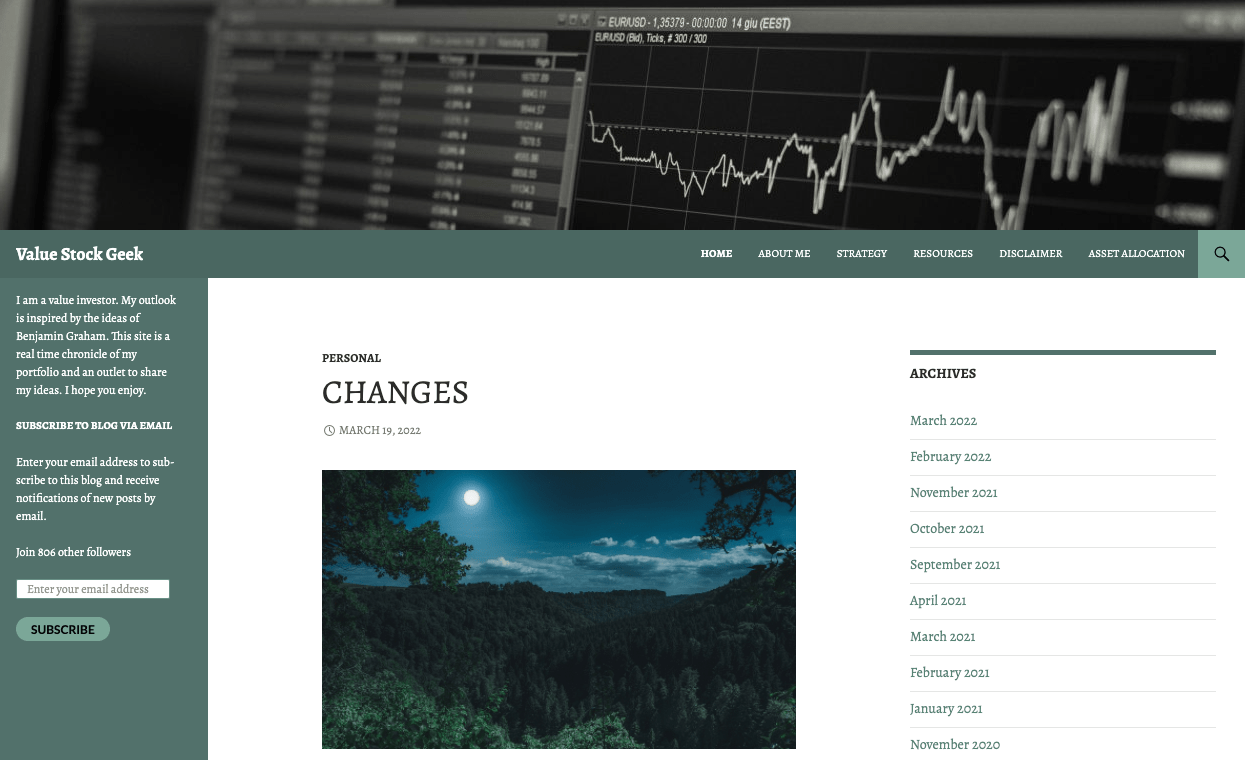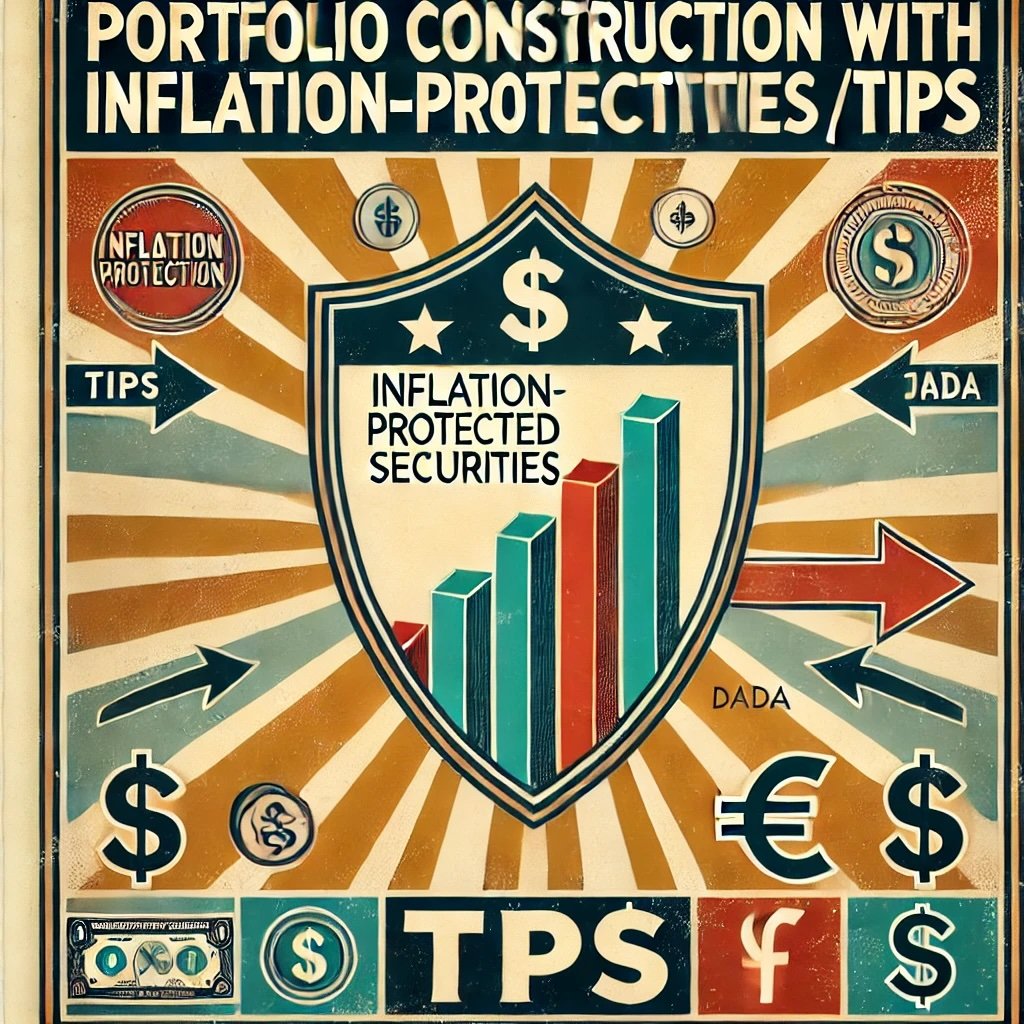We’re fortunate enough to have Value Stock Geek as our first interview in the ‘Investing Legends‘ series where we’ll be covering the thought-process, strategies and portfolios of some of the best amateur and professional investors.
In my opinion, Value Stock Geek is one of the legendary amateur investors with a social media platform and blog presence.
In this interview we’ll cover value investing, alternative asset classes (gold) and The Weird Portfolio along with several other topics for entertainment purposes only. This is not investing advice.
As an aside, I greatly appreciate Value Stock Geek taking the time to answer all of these questions with such detail: over 2000 words. The answers were returned back to me within the same day. Indeed, legendary!

The Weird Portfolio and Value Investing with Investing Legend Value Stock Geek
Hey guys! Here is the part where I mention I’m a freakin’ travel blogger!
This interview and entire investing legends series is entirely for entertainment purposes only and is not investing advice.
Do your own due diligence and research.

These asset allocation ideas and model portfolios presented herein are purely for entertainment purposes only. This is NOT investment advice. These models are hypothetical and are intended to provide general information about potential ways to organize a portfolio based on theoretical scenarios and assumptions. They do not take into account the investment objectives, financial situation/goals, risk tolerance and/or specific needs of any particular individual.


Value Stock Geek
Q1) Thanks for taking the time to participate in this interview ValueStockGeek. As one of the great amateur investors you’ve built an engaged following on social media and on your blogs.
Was there any particular article or tweet that was a turning point for you in terms of gaining an audience or was it slow steady progress and consistent effort the entire way?
A1) It has been a pretty steady grind. I had an idea in 2016 to set aside an IRA account that I had saved up and apply a Ben Graham style strategy, then track it on a blog. I didn’t catch a lot of traction early on. Later in 2017, I joined Twitter and slowly built a following.
I’ve had many tweets go viral over the years, which helped increase the number of followers. The blog posts and tweets seem to resonate, and it has been pretty steady. Overall, I don’t have a social media strategy and post what I think. I’ve been myself, warts and all.

Q2) Before we dive deep into your fascinating The Weird Portfolio I first wanted to rewind things back to the beginning.
How did you become interested in investing and what/who were some of your earliest influences?
A2) I became interested in finance in the late 1990s when I was in high school. I’ve always been a nerd, so I was really into computers & the world wide web. I was very much an internet bubble believer.
I mostly fooled around with money I saved up mowing lawns and speculated on tech stocks. My favorite stock was Cisco systems.
At my high school graduation party in 2000, an older family friend recommended that I read The Intelligent Investor. Reading Ben Graham convinced me that the late ’90s was a bubble. The bubble had also started popping at that point (the summer of 2000), and I knew something was amiss.
Ben Graham made sense to me.
I then moved on to the Buffett letters when I was in college, which further solidified my value mindset.

The Weird Portfolio

Q3) The Weird Portfolio literally tees-off on my about page stated investing interests of equity optimization, alternative asset classes, diversification and contrarianism.
Can you introduce The Weird Portfolio, its five asset classes and your overall portfolio strategy.
A3) The weird portfolio is a product of a couple of decades of finding the optimal strategy for my savings. When I developed it, my savings was in a soup of stocks and ETFs. I wanted to get it more organized.
The portfolio is five key asset classes: US Small Cap Value, International Small Caps, Real Estate, Gold, and Long Term Treasuries.
The goal was to have a static allocation to avoid large-cap bubbles, have defensive assets that could restrain drawdowns, provide ample diversification, be tax-efficient, and provide a solid long-term rate of return. After making many macro predictions and being wrong about them, I also wanted a strategy where I didn’t have to do that.

Q4) The most milquetoast 60/40 portfolio of 60% equity market cap weighted stocks and 40% aggregate bonds is the industry standard today. Diversification ends here for most investors.
However, without any real asset or alternative exposure I would argue this classic portfolio is ill-prepared for stagflation and certain other economic regimes.
What are your thoughts on that subject? Furthermore, when does The Weird Portfolio thrive vs when might it potentially underperform the 60/40?
A4) The 60/40 is an acceptable portfolio, and I think it will work out for most people over a long time.
With that said, it has issues. For the bonds, the most significant risk is inflation. Inflation reduces the purchasing power of bonds. As a double whammy, the Fed raises rates to deal with inflation, further hurting bonds in the short term.
Gold and real estate are both in the portfolio as inflation hedges. An allocation to gold and real estate defends against bond risks.
Gold should also protect against another threat to bonds: government solvency issues. It is difficult for me to imagine a problem with the USA encountering an actual solvency issue or a debt crisis, and gold does not do well.
The issue for the 60% stocks is that it’s usually large-cap stocks. The problem with large caps is that they go through a cycle every 20-30 years of euphoria & fear. There are decades when they enter bubbles, and they have to spend another decade working off the bubble. The late 1960s/early 1970s was a bubble in the Nifty Fifty, and then the US spent the decade of the 1970s working it off.
The late 1990s was a bubble, and the US spent the 2000s working it off. In the case of Japan (whose bubble reached an extreme 100 Shiller P/E in the 1980s), it took decades to work off their 1980’s bubble.
Small-cap value helps avoid the large-cap bubbles. The weird portfolio avoids large-cap bubbles by investing primarily in small-cap value. Small-cap value can still deliver a steady grind of a return while large-cap’s go through decades of euphoria and fear and radically changing sentiment.
Small-cap value simply delivers a slow and steady return, decade after decade.
International diversification also helps minimize exposure to bubbles as all of the equity markets in the world are unlikely to enter a bubble simultaneously.
Small-cap value has also continued to deliver a steady grind in Japan, while large-caps have borne the brunt of the post-1980s bubble meltdown. The US had a similar experience in the 1970s and the 2000s.
Q1 2022 was an excellent example of the benefits of pivoting to small value and gold. Gold delivered a positive return this quarter, and small value had a slight 2% decline while the stock and bond markets both declined by over 5%.

Value Investing
Q5) You’re ValueStockGeek! Let’s get into your passion for value investing and specifically the strategy you deploy as a value investor. What makes you pursue value over growth, momentum, market-cap weighted, quality and a myriad of other equity strategies?
Furthermore are there any specific fundamentals, screens or characteristics you’re looking for when comparing value funds A, B and C?
Are you looking for P/E, position size, concentrated exposure, multi-factor or other areas of consideration before settling on one fund over another?
A5) Value investing resonates with me because it makes intuitive sense. Stocks are ownership shares in businesses. Figure out what the company is worth and pay less. That makes total sense.
Seeing the aftermath of the internet bubble also imprinted it in my brain as the way to go.
In terms of quant metrics in individual stocks, I am looking for a free cash flow yield for a stock investment that roughly doubles the 10-year bond. I also look at 20-year trending in different multiples (EV/EBIT and EV/Sales), and I want to buy it at or near a trough relative to its history.
I prefer companies with economic moats where I can at least try to predict the future. I’ve attempted to mess around with turnarounds and more cyclical situations, but I could never get it to work. For that reason, I prefer moatier businesses.
In terms of position sizing, I equal weight. I never know my best idea in advance, so I equally weight the portfolio. In my experience, I have never been able to predict which stock will be the best performing in my portfolio. For that reason, I don’t believe in ‘best ideas.’
In terms of portfolio sizing, I aim for 12-15 positions.
In quant terms, this portfolio size seems to do the most for reducing drawdowns and volatility in the backtest.
In practical terms, I can actually follow the developments in 12-15 companies. I used to manage a much more extensive portfolio and found it challenging.
My results back then also closely matched the Vanguard Small-Cap Value fund, at which point, I figured I either should change to a more concentrated strategy or buy the Vanguard Small-Cap Value fund.

Gold In The Portfolio?
Q6) One thing I noticed by doing some recent research was that gold and US equities over the past 50 years only had 4 years when both were down at the same time. By owning gold in your portfolio you’re instantly contrarian in the eyes of many investors.
Firstly, you’re no longer 60/40 and you’ve got an alternative investment in your portfolio.
Secondly, you’ve got an asset class that is highly volatile and prone to prolonged drawdowns. How do you justify its existence when many investors stay retrograde far away?
A6) I used to have the same attitude about gold. It seems so illogical to hold a non-income-producing asset in a portfolio. It also doesn’t help that the most prominent advocates for gold seem a bit unhinged & crazy.
I found this to be a limiting view and I changed my mind.
In the backtesting, you will see that gold has an uncorrelated relationship with stocks and bonds and helps minimize volatility & drawdowns.
It helps to think about when gold should do well in more practical terms. I can think of two primary scenarios where gold will do well: 1) Extreme inflation and 2) Extreme crises.
If inflation were to go over 10% for an extended period, I would be shocked if gold did not do well. I would also be surprised if gold didn’t do well if the US government or dollar faced a significant crisis, such as a solvency issue (we almost had this happen in the 2011 debt ceiling showdown). I think gold would also do well in an extreme crisis involving the dollar.
Gold is a crisis asset, which has been the case for millennia. One of the most substantial price moves in gold was from 1929-32, when gold increased by nearly 50%. The early 1930s was a period of deflation, but gold still did well because of the crisis.
Gold is still a crisis asset. The gold bullion websites were selling out when things were horrible & uncertain with COVID in Q1 2020.
Will any of those things happen? Solvency issues with the government? High inflation sustained for a long time? I have no idea, but having some gold helps me sleep at night knowing that I have an asset that should do well in those scenarios.
This piece of mind helps me stay invested with my income-producing assets.
The uncorrelated relationships with stocks & bonds are icing on the cake.

The Importance Of Diversification
Q7) With 5 asset classes in The Weird Portfolio you’re already more diversified than most investors.
Were there any other asset classes or strategies that were closely considered but ultimately didn’t make the cut?
A7) I considered commodities.
I decided against commodities because they don’t deliver a positive return over the long run. In contrast, gold at least provides a favorable long-term return over long stretches even though it gets there with high volatility.
Also, I was not fond of the commodity ETF vehicles. Commodity ETFs generate a return using futures. In contrast, I can buy gold ETFs backed by physical gold. In addition to my ETF exposure, I can buy bullion and store it. I can’t do that with barrels of oil or bushels of wheat.
Some of these vehicles also create a K-1, and I like to keep my tax life simple.
I also considered hedging strategies and volatility futures. My conclusion is that they were all too complicated and didn’t deliver a positive expected return over an entire market cycle. Sure, you’ll get a 50% pop when the market crashes, but that’s after losing money for 5-10 years.
I value simplicity above all else. Hedging and volatility futures are far from simple.
Lessons Learned With Value Stock Geek

Q8) If you could travel back in time and give advice to a young Value Stock Greek what would it be?
In other words, what are the most valuable lessons you’ve learned as an investor over the years that you didn’t know when you first started?
A8) If I could travel back in time, I would advise myself to be more open-minded to new ideas. I considered anything but Ben Graham value investing to be degenerate gambling. I would have learned more if I had been more open-minded.
An excellent example of this is Google. I knew that Google was a good investment in the early 2010s, but I refused to buy it because it wasn’t a Ben Graham stock.
I knew better, and I knew the growth prospects & quality of Google, but I was stuck on value investing like it was dogmatic religion. I had a close-minded attitude, and it cost me money.

Passive vs Active Investing
Q9) I’ve heard some investing gurus state investing should be boring. It should be like watching grass grow or paint dry. I somewhat disagree with that line of thinking.
I’m in agreement that one ought to have a permanent portfolio solution that helps an investor protect themselves from biases and the tendency to muck things up.
However, I also think investing should be fun and a certain small part of the portfolio should be allocated to pursuing different strategies, picking stocks or going unconstrained. What are your thoughts on that?
I’m asking also given the fact you do select stocks in addition to The Weird Portfolio. Is this one way you’re making investing more fun or is it specifically strategy and potential performance based?
A9) There is a place for active investing, but everyone should be aware of how much the odds are stacked against you.
The truth: Boring & passive portfolios work best, and active investing is typically a waste of time.
Most people should follow a similar course and pick a sensible, easy-to-stick-with, easy to implement, low fee, & tax-efficient asset allocation and chill out.
The key reason for this is that active management usually fails. The SPIVA data is compelling on this point.
https://www.spglobal.com/
Over 20 years, nearly 90% of professionals don’t beat their benchmark.
This underperformance is even true when you look at small caps. You would think that more small-cap managers would outperform their benchmark, but it’s just as dismal for small-cap managers as it is for guys trying to beat the S&P 500.
This is often true for the best investors. Often, when a super investor has an excellent 5-10 year period, they enter a lull of performance when their factor goes out of favor. Over the entire 20 year period, the factor itself outperforms them.
This is even true for legends of investing.
A backtest of low P/E stocks outperforms John Neff, a legendary low P/E investor. A backtest of low price/book stocks outperforms Walter Schloss, a legendary low price/book investor.
Most of Peter Lynch’s outperformance came when he managed smaller sums and predominantly invested in small-cap growth – during an excellent period for small-cap growth as a factor in the late 1970s and early 1980s.
Even Buffett mostly matches the performance of his factors – value & quality – and a bulk of his outperformance is via cheap leverage in the form of the insurance float.
Even Ray Dalio typically underperforms his passive allocation – the All Seasons Portfolio. From 2005-2021, Bridgewater returned 4.5%. An investor in the All Seasons Portfolio – which anyone with a brokerage account can buy with passive ETFs – returned 7.33%.
You also see this in the dismal performance of hedge funds. The headline from the Buffett vs. Ted Seides 2007-2017 bet is that hedge funds underperformed the S&P 500. But it’s even worse than that – the hedge funds underperformed the 10-year treasury bond! That’s an extraordinary result.
You could have invested in the most boring low volatility portfolio imaginable – like Harry Browne’s Permanent Portfolio – and did better than that. You also wouldn’t have had to pay massive fees or read insane letters from these people rationalizing their underperformance.

It is even more extraordinary to consider that these hedge fund guys have genius-level IQs. They have the best information on the planet. They’re hiring private investigators to dig into the lives of CEOs, looking at satellite data for parking lots of companies, and getting real-time credit card data. The level of diligence they’re performing is insanely hard work – and yet their results still suck.
If genius hedge fund managers can’t do it and the greatest investors of all time match their factor exposure, then what chance do we have?
This stuff is enraging to fundamental investors, but it’s all true.
Stock picking and speculation are almost always a total waste of time – for professionals and individual investors alike. Performance can often be boiled down to factors, whether we like it or not. Those factors represent a ceiling and not a floor to results.
With all of that said, I pick stocks! I have money set aside to do this. I find it incredibly fun, and I enjoy the hunt. Learning about companies is a joy for me. Investing doesn’t have to be boring. There is a place for active investing in a larger portfolio, even though the game is likely unwinnable.
I think that having some money set aside for this purpose is acceptable.
Harry Browne (the inventor of the Permanent Portfolio) called this a ‘variable’ portfolio. Set some money aside to play the game – if you must. There is nothing wrong with that. Having an outlet where you can express your active judgments about markets & companies helps you stay the course with the rest of the ‘boring’ money – which is the real muscle movement that will make money over the long run.
It’s similar to how a cheat day on a diet makes it easier to stick to a diet.

Q10) I always find it fun to ask investors what would be the extreme opposite of their preferred strategy. What would be the anti-Value Stock Greek portfolio? 5 asset classes you’d never want to own.
The opposite of my preferred strategy would be buying the most expensive stocks in the market & the most aggressive assets with no defensive assets to protect on the downside. The portfolio would probably be composed of ARKK-style stocks, NFTs, meme stocks, and crypto.
Thanks again for the interview! How can people find you on social media and check out your blogs?
The best place to check me out is on Twitter. My handle is @valuestockgeek
I would also recommend my substack to read my opinions about individual stocks: https://valuestockgeek.
The book about the weird portfolio can be read for free here: https://valuestockgeek.medium.
(Nomadic Samuel) speaking here. I’d also highly recommend the original blog as well: https://valuestockgeek.com
Important Information
Comprehensive Investment Disclaimer:
All content provided on this website (including but not limited to portfolio ideas, fund analyses, investment strategies, commentary on market conditions, and discussions regarding leverage) is strictly for educational, informational, and illustrative purposes only. The information does not constitute financial, investment, tax, accounting, or legal advice. Opinions, strategies, and ideas presented herein represent personal perspectives, are based on independent research and publicly available information, and do not necessarily reflect the views or official positions of any third-party organizations, institutions, or affiliates.
Investing in financial markets inherently carries substantial risks, including but not limited to market volatility, economic uncertainties, geopolitical developments, and liquidity risks. You must be fully aware that there is always the potential for partial or total loss of your principal investment. Additionally, the use of leverage or leveraged financial products significantly increases risk exposure by amplifying both potential gains and potential losses, and thus is not appropriate or advisable for all investors. Using leverage may result in losing more than your initial invested capital, incurring margin calls, experiencing substantial interest costs, or suffering severe financial distress.
Past performance indicators, including historical data, backtesting results, and hypothetical scenarios, should never be viewed as guarantees or reliable predictions of future performance. Any examples provided are purely hypothetical and intended only for illustration purposes. Performance benchmarks, such as market indexes mentioned on this site, are theoretical and are not directly investable. While diligent efforts are made to provide accurate and current information, “Picture Perfect Portfolios” does not warrant, represent, or guarantee the accuracy, completeness, or timeliness of any information provided. Errors, inaccuracies, or outdated information may exist.
Users of this website are strongly encouraged to independently verify all information, conduct comprehensive research and due diligence, and engage with qualified financial, investment, tax, or legal professionals before making any investment or financial decisions. The responsibility for making informed investment decisions rests entirely with the individual. “Picture Perfect Portfolios” explicitly disclaims all liability for any direct, indirect, incidental, special, consequential, or other losses or damages incurred, financial or otherwise, arising out of reliance upon, or use of, any content or information presented on this website.
By accessing, reading, and utilizing the content on this website, you expressly acknowledge, understand, accept, and agree to abide by these terms and conditions. Please consult the full and detailed disclaimer available elsewhere on this website for further clarification and additional important disclosures. Read the complete disclaimer here.





